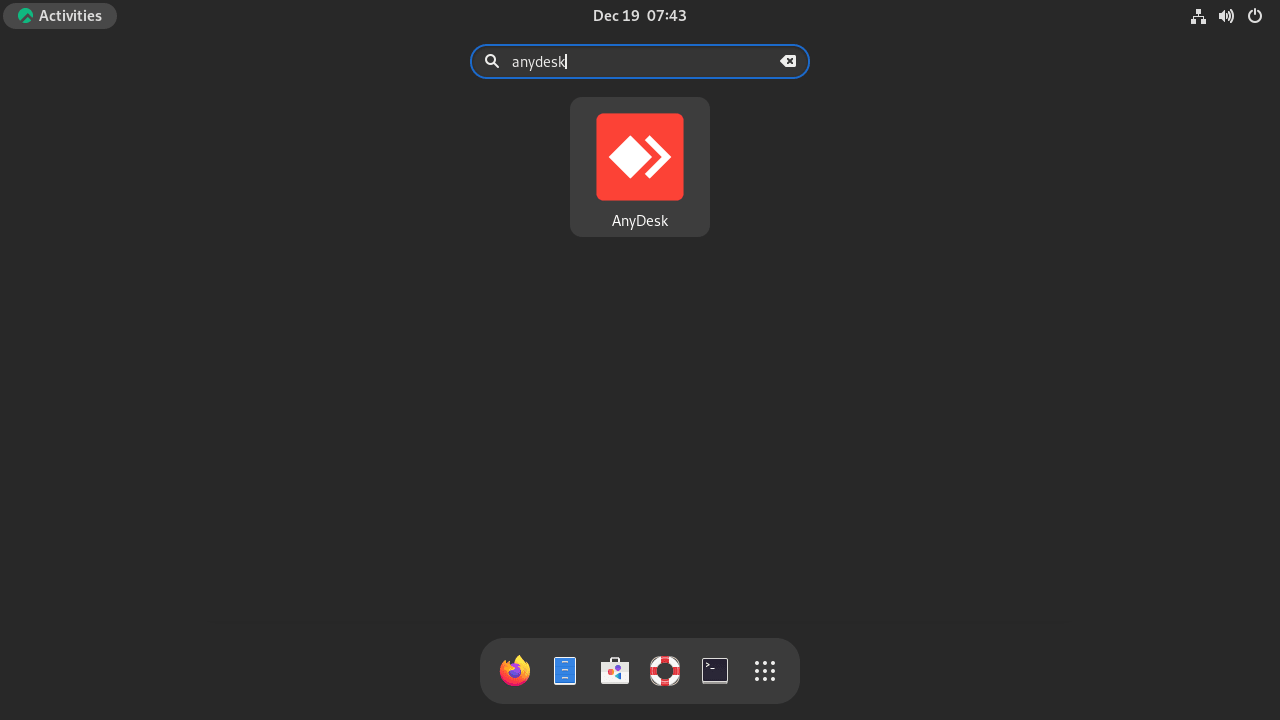AnyDesk is a powerful remote desktop application that allows you to connect to and control other computers securely and efficiently. It offers low latency, high frame rates, and high-quality connections, making it an ideal solution for remote support, collaboration, and accessing files or applications from anywhere. AnyDesk ensures secure and reliable remote connections with its advanced encryption and security features.
The following guide will demonstrate the steps to install AnyDesk on Rocky Linux 9 or 8 using command-line commands. The installation method involves using the AnyDesk RPM for the latest version, ensuring you get the most up-to-date features and performance enhancements.
Update Rocky Linux Before AnyDesk Installation
Before proceeding with the tutorial, ensuring your system is up-to-date with all existing packages is good.
sudo dnf upgrade --refreshImport AnyDesk RPM
Before proceeding, you must copy and paste the following command in your terminal, creating the AnyDesk repository file under the /etc/yum.repos.d/ directory.
AMD64 (64-bit) users:
sudo tee /etc/yum.repos.d/anydesk.repo<<EOF
[anydesk]
name=AnyDesk Rocky Linux
baseurl=http://rpm.anydesk.com/centos/x86_64/
gpgcheck=1
repo_gpgcheck=1
gpgkey=https://keys.anydesk.com/repos/RPM-GPG-KEY
EOFAlternatively, you can verify the repository was added using the dnf repolist command.
dnf repolist | grep anydeskExample output:
[joshua@rocky-linux ~]$ dnf repolist | grep anydesk
anydesk AnyDesk Rocky LinuxInstall AnyDesk via DNF Install Command
Finally, install AnyDesk with the following command.
sudo dnf install anydesk -yOptionally, you can check the version installed using the following command.
anydesk --versionExample output:
[joshua@rocky-linux ~]$ anydesk --version
6.2.1[Launch AnyDesk User Interface
Launching can be done in a few ways now that you have the software installed.
Using the command line terminal, you can open it quickly by using the following command.
anydeskAlso, while in the terminal, you can grab your AnyDesk ID using the following command.
anydesk --get-idThen, you can connect to other computers or remote systems using the ID in a terminal command.
anydesk <AnyDesk ID>The best way to use AnyDesk for desktop users who prefer not to use the command line terminal is to open the GUI of the application by following the path:
Activities > Show Applications > AnyDesk.


Additional AnyDesk Commands
Update AnyDesk
The software should update itself with your system packages for desktop users using the DNF package manager. Use the following command in your terminal for users who want to check manually.
sudo dnf update --refreshRemove AnyDesk
When you no longer want the video conference software installed on your system, use the following command to remove it.
sudo dnf autoremove anydeskRemove the repository if you plan not to re-install AnyDesk again.
sudo rm /etc/yum.repos.d/anydesk.repoConclusion
In the tutorial, you have learned how to install AnyDesk on Rocky Linux 9 or 8 using the official repository so that you will always have the latest version installed. Overall, AnyDesk does work well with Enterprise Linux distributions, given their popularity in workplaces and scenarios where AnyDesk shines.


